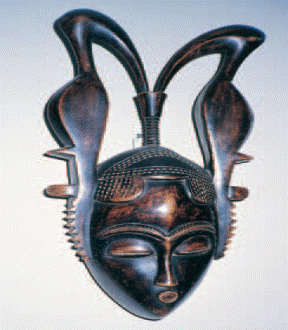
РЕЗОЛЮЦІЯ: Громадського обговорення навчальної програми статевого виховання
ЧОМУ ФОНД ОЛЕНИ ПІНЧУК І МОЗ УКРАЇНИ ПРОПАГУЮТЬ "СЕКСУАЛЬНІ УРОКИ"
ЕКЗИСТЕНЦІЙНО-ПСИХОЛОГІЧНІ ОСНОВИ ПОРУШЕННЯ СТАТЕВОЇ ІДЕНТИЧНОСТІ ПІДЛІТКІВ
Батьківський, громадянський рух в Україні закликає МОН зупинити тотальну сексуалізацію дітей і підлітків
Відкрите звернення Міністру освіти й науки України - Гриневич Лілії Михайлівні
Представництво українського жіноцтва в ООН: низький рівень культури спілкування в соціальних мережах
Гендерна антидискримінаційна експертиза може зробити нас моральними рабами
ЛІВИЙ МАРКСИЗМ У НОВИХ ПІДРУЧНИКАХ ДЛЯ ШКОЛЯРІВ
ВІДКРИТА ЗАЯВА на підтримку позиції Ганни Турчинової та права кожної людини на свободу думки, світогляду та вираження поглядів
- Гідрологія і Гідрометрія
- Господарське право
- Економіка будівництва
- Економіка природокористування
- Економічна теорія
- Земельне право
- Історія України
- Кримінально виконавче право
- Медична радіологія
- Методи аналізу
- Міжнародне приватне право
- Міжнародний маркетинг
- Основи екології
- Предмет Політологія
- Соціальне страхування
- Технічні засоби організації дорожнього руху
- Товарознавство продовольчих товарів
Тлумачний словник
Авто
Автоматизація
Архітектура
Астрономія
Аудит
Біологія
Будівництво
Бухгалтерія
Винахідництво
Виробництво
Військова справа
Генетика
Географія
Геологія
Господарство
Держава
Дім
Екологія
Економетрика
Економіка
Електроніка
Журналістика та ЗМІ
Зв'язок
Іноземні мови
Інформатика
Історія
Комп'ютери
Креслення
Кулінарія
Культура
Лексикологія
Література
Логіка
Маркетинг
Математика
Машинобудування
Медицина
Менеджмент
Метали і Зварювання
Механіка
Мистецтво
Музика
Населення
Освіта
Охорона безпеки життя
Охорона Праці
Педагогіка
Політика
Право
Програмування
Промисловість
Психологія
Радіо
Регилия
Соціологія
Спорт
Стандартизація
Технології
Торгівля
Туризм
Фізика
Фізіологія
Філософія
Фінанси
Хімія
Юриспунденкция
Contents
WHAT YOU WILL DO
WHAT YOU WILL NEED
WHAT YOU WILL LEARN
Виготовлення маски
Unit 16. Making a Mask with Formal Balance
Ex. 1. Прочитайте та перекладіть текст:
Think about masks you have seen or worn. What kind of balance does the mask in Figure 16–1show? In many cultures, masks are made from available materials and have formal balance to express the idea, mood, and purpose of the mask. The Yaw are people of Africa created the mask shown in Figure 16–1. It was carved from wood that was polished to a high sheen. Notice the arrangement, textures, and kinds of shapes the artist used for facial features and details on the mask. Some
shapes are geometric while others are freeform. Can you find examples of each?

Figure 16–1
Africa. Yaware People. Face Mask. Early twentieth century. Wood. 50.8 3 22.8 cm (20 _ 9”). Private Collection.
You will demonstrate technical skills using a variety of art media and materials to
produce a sculpture of a clay mask. You will design a personal mask that has formal balance. Select geometric shapes and textures that add interest and express the idea of your mask. Then create a three-dimensional mask in clay.
● Pencil and 9 x 12-inch sketching paper
● Clay mat or newspaper
● Rolling pins
● Scissors
● Clay, low-fire or other clay body
● Assortment of common texture tools: paper clips, pencils, skewers, toothbrushes, combs, etc.
● Tempera or acrylic paints and brushes
1.Fold the paper. Cut several symmetrical shapes for a mask. Choose one.
2.Use your imagination to design a mask with formal balance. Choose geometric
shapes for facial features and other details. Add pattern or texture to add interest.
3.On a clay mat or newspaper, roll out the clay so that it is about 1/4 of an inch thick and large enough for the drawing. Lay the paper sketch on top of the clay.
Lightly trace features and details. Use a fettling knife or open paper clip to cut out
the mask shape and small openings, if desired. Be careful, too many openings will weaken the clay mask.
4.Build out some features with clay coils and cut-out shapes. Score, slip, and smooth edges to attach.
5.Apply rows of pattern and texture using found objects such as pens, paper clips,
cardboard strips, toothbrushes, combs, and so on.
6.When finished, crumple up paper towels or newspaper. Shape the clay over the
pillow to softly round the mask shape. Air dry. Bisque fire. Follow directions for
clay body.
7.Apply tempera or acrylic paints. Choose a color scheme that emphasizes the mood or idea of the mask and maintains formal balance. Seal water-based paints with medium or spray varnish.
Ex.2.Дайте відповіді на запитання:
1. Analyze the use of geometric and freeform shapes in this mask.(Figure 16–1)
2. How do these shapes create balance? (Figure 16–1)
Домашнє завдання:
Ex.3. Опишіть маску відповідаючи на подані нижче питання:
1. Identify the shapes used in your mask.
2. What tools were used to apply texture? Explain the color scheme.
3. How have you produced formal balance in the mask?
4. What mood or idea does it express?
5. Is this different from your original idea?
 Figure 16–2 Student work.
Figure 16–2 Student work.
Питання для самоконтролю:
1.What kind of balance does the mask in Figure 16–1show?
Lesson 1 My last visit to the museum
TRANSLATOR’S FALSE FRIENDS ………………………………………………………………………
Lesson 2 Painting in England
WORD-BUILDING………………………………………………………………………………………….
Lesson 3The trends in painting in the 19th century
The Passive Voice Present simple
Past simple Future simple…………………………………………………………………………………….
Lesson 4Late 19th -20th century art
The Passive Voice Present Continuous
Past Continuous………………………………………………………………………………………
Lesson 5 Ukrainian Pictorial Art
The Passive Voice Present Perfect Past Perfect Future Perfect…………………………………………………………
Lesson 6 Architecture
Secuence of Tenses…………………………………………………………………………………………….
Читайте також:
Переглядів: 790
| <== попередня сторінка | | | наступна сторінка ==> |
| The story of graffiti tells us a lot about social history, the hip-hop movement and artists in the USA. | | | My last visit to the museum |
|
Не знайшли потрібну інформацію? Скористайтесь пошуком google: |
© studopedia.com.ua При використанні або копіюванні матеріалів пряме посилання на сайт обов'язкове. |